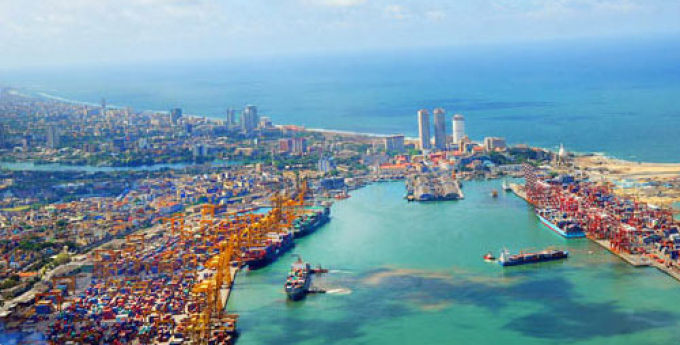Adani: we can weather bribery claims storm – it's 'business as usual'
Adani Group seems to be making a concerted effort to reaffirm that “it’s business as ...
FDX: ABOUT USPS PRIVATISATIONFDX: CCO VIEWFDX: LOWER GUIDANCE FDX: DISRUPTING AIR FREIGHTFDX: FOCUS ON KEY VERTICALFDX: LTL OUTLOOKGXO: NEW LOW LINE: NEW LOW FDX: INDUSTRIAL WOESFDX: HEALTH CHECKFDX: TRADING UPDATEWMT: GREEN WOESFDX: FREIGHT BREAK-UPFDX: WAITING FOR THE SPINHON: BREAK-UP ALLUREDSV: BREACHING SUPPORTVW: BOLT-ON DEALAMZN: TOP PICK
FDX: ABOUT USPS PRIVATISATIONFDX: CCO VIEWFDX: LOWER GUIDANCE FDX: DISRUPTING AIR FREIGHTFDX: FOCUS ON KEY VERTICALFDX: LTL OUTLOOKGXO: NEW LOW LINE: NEW LOW FDX: INDUSTRIAL WOESFDX: HEALTH CHECKFDX: TRADING UPDATEWMT: GREEN WOESFDX: FREIGHT BREAK-UPFDX: WAITING FOR THE SPINHON: BREAK-UP ALLUREDSV: BREACHING SUPPORTVW: BOLT-ON DEALAMZN: TOP PICK

The unusually strong transhipment cargo gains by Sri Lanka’s Colombo port this year, driven by Red Sea-linked vessel diversions, seem to be ebbing.
The port saw a 6% year-on-year drop in transhipment volumes in July following the 5% decline reported for June, according to the latest data.
Still, Colombo ended H1 24 with a 9.6% rise in transhipment cargo handling, seeing double-digit percentage upswings from January through April.
“The port is poised to become a key transhipment hub serving the Middle East, as many shipping lines are rerouting vessels to avoid prevailing risks in the Red Sea and Suez Canal,” confirmed Sri Lanka Ports Authority chairman Keith Bernard.
But the pace of trade reversal for Colombo is more pronounced in its vessel call data: containership visits were down 18% in July.
The port’s inability to keep up with stronger-than-expected increase in transhipment calls, due to capacity constraints, forced many regular and ad-hoc liner customers to reroute, and some Indian ports benefited.
For example, DP World Cochin, also known as Vallarpadam Terminal, more than doubled its container transhipments between April and July – the first four months of Indian fiscal year 2024/25 – to 70,701 teu, from 29,358 teu in the period a year ago, according to new port data.
Cochin has handled a raft of ultra-large ad-hoc calls, including the MSC Aurora, MSC Darlene and MSC Mariagrazia.
Terminal CEO Praveen Thomas Joseph said: “In Q1 24, we introduced new STS [ship-to-shore] cranes, e-RTGs [rubber-tyred gantry cranes] and expanded the yard space, boosting our capacity to approximately 1.4m teu a year, solidifying DP World Cochin as one of the largest terminals in South India.”
Similarly, Chennai Port saw its April-July transhipment movements rocket to 35,417 teu from the usual 6,848 teu.
Meanwhile, Adani Group’s Vizhinjam Port in southern India is being touted as a strong potential “hub contender” in the subcontinent market, due to its strategic location.
It recently began trial operations with a Maersk call, logging some 6,900 teu moves at the new terminal, which is due to launch phase-one operations at full scale shortly.
To seize the opportunity presented by a diversifying port market, Adani is offering attractive service rates for transhipment calls at Vizhinjam, arguably lower than the scale of vessel-related charges at Colombo.
While Colombo undoubtedly continues to be the focal point of transhipment calls for the subcontinent trade, the battle for market share is set to heat up in the region, as alternatives emerge.
Maersk said recently: “As a transhipment hub, Vizhinjam will help us bring more flexibility to our customers’ supply chains that need to move cargo in and out of India.”
Looking for a quick catch up of last week’s supply chain news? This week’s News in Brief Podcast does just that in under 11 minutes!
Comment on this article